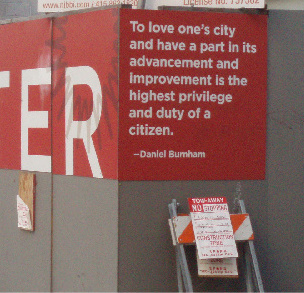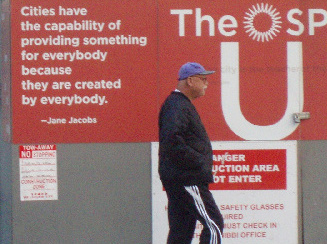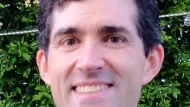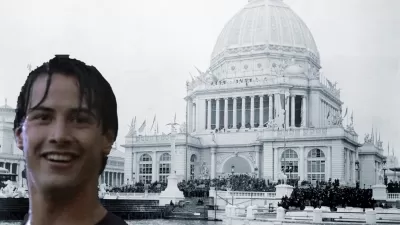Anyone who has picked up a greeting card, coffee mug, or calendar in the past 100 years or so can recognize the sentiments of any number of great American environmentalists: Whitman and his yawp, Thoreau and his deliberateness, Frost and his serene decisiveness. We know the exhortations of Carson, Leopold, Emerson, and Abbey. John Muir, John McPhee, and Barry Lopez are known to have taken a few strolls through the chestnuts.
Anyone who has picked up a greeting card, coffee mug, or calendar in the past 100 years or so can recognize the sentiments of any number of great American environmentalists: Whitman and his yawp, Thoreau and his deliberateness, Frost and his serene decisiveness. We know the exhortations of Carson, Leopold, Emerson, and Abbey. John Muir, John McPhee, and Barry Lopez are known to have taken a few strolls through the chestnuts.
This tradition is perhaps America's most noble contribution to the global salon. The ferocious expansion ofthe United States into unknown, if not entirely unoccupied, lands gave its authors an unparalleled opportunity to contemplate the natural world and humanity's precarious place in it. Nowhere else was the contrast between wilderness and civilization so stark, and nowhere else could men of letters test their skills on such a worthy subject: the fresh, green breast of the New World.
By constrast, America's cities are, by and large, prosaic places. They remain far more plain and purposeful than the great capitals of Europe. And they are trifling compared to the plains, canyons, ranges and forests that America accepted as if they were gifts from the Creator himself, congratulating us on our brotherhood and our choice of leaders. (I seem to recall a song about purple mountains.)
America views cities as cradles of action -- we work, love, live and die there -- but they are not objects of contemplation. Urban sojourns share little of the romance of walks in the woods. More often, literary cities are places of drugs, hookers, and teenage ennui. Even the greatest of America's nonfiction urban writers -- Jacobs, Mumford, whomever -- merit nary a mention in the high school curriculum or the national consciousness. Because they are human creations, any further commentary may be redundant -- civilization seldom forges anything that could be called mystery.
The biggest mystery is that which hangs over all of us, all the time: of how American cities came to be, and why the slimmest blade of grass can invoke more joy than some of the tallest spires. We hesitate to ask those questions for two reasons. First, they are too painful to contemplate. And, second, to identify the answers would implicitly require the pursuit of solutions.
But not everyone shies away from this task, and not everyone ignores the lyricism of the city. While flaneuring about in San Francisco recently, I happened upon the construction site for the new headquarters of San Francisco Planning and Urban Research (SPUR). I am not familiar enough with SPUR to know whether I approve of it as an organization -- at a glance, it appears to be a worthy think tank trying to make San Francisco a better place -- but I know that I like their approach to urban literature.
I have read the collected works of Jane Jacobs several times over, but always in solitude. I have run across Daniel Burnham's pithy, if trite, condemnation of the twee more times than I can count, but never had I seen any of his words writ large. And yet, there they were:


Absent identification, the quotations came courtesy of merely of a certain "Jane Jacobs" and a fellow named "Daniel Burnham." Obviously SPUR is not so disingenuous to believe that everyone knows who Burnham and Jacobs are, but that's the point. Indeed, neither should need any introduction. For those of us who do know, it's gratifying. For those who don't, I have to assume that SPUR's hope is that they will go home, consult the Google, and find out that there are in fact people who dedicate deep thought, surpassing eloquence, and high ambitions.
Two well-placed quotations will not by themselves breathe life into American cities. And, of course, it's ironic that they appear in one of the rare cities that hardly needs help. Even so, the mere suggestion that cities can be put to words and therefore transcend the hard realities of maps and blueprints, brings up the possibility that passers-by and policy wonks alike will be inspired to pause and imagine how they can contribute to these grand creations.

Planetizen Federal Action Tracker
A weekly monitor of how Trump’s orders and actions are impacting planners and planning in America.

San Francisco's School District Spent $105M To Build Affordable Housing for Teachers — And That's Just the Beginning
SFUSD joins a growing list of school districts using their land holdings to address housing affordability challenges faced by their own employees.

The Tiny, Adorable $7,000 Car Turning Japan Onto EVs
The single seat Mibot charges from a regular plug as quickly as an iPad, and is about half the price of an average EV.

Seattle's Plan for Adopting Driverless Cars
Equity, safety, accessibility and affordability are front of mind as the city prepares for robotaxis and other autonomous vehicles.

As Trump Phases Out FEMA, Is It Time to Flee the Floodplains?
With less federal funding available for disaster relief efforts, the need to relocate at-risk communities is more urgent than ever.

With Protected Lanes, 460% More People Commute by Bike
For those needing more ammo, more data proving what we already knew is here.
Urban Design for Planners 1: Software Tools
This six-course series explores essential urban design concepts using open source software and equips planners with the tools they need to participate fully in the urban design process.
Planning for Universal Design
Learn the tools for implementing Universal Design in planning regulations.
Smith Gee Studio
City of Charlotte
City of Camden Redevelopment Agency
City of Astoria
Transportation Research & Education Center (TREC) at Portland State University
US High Speed Rail Association
City of Camden Redevelopment Agency
Municipality of Princeton (NJ)





























